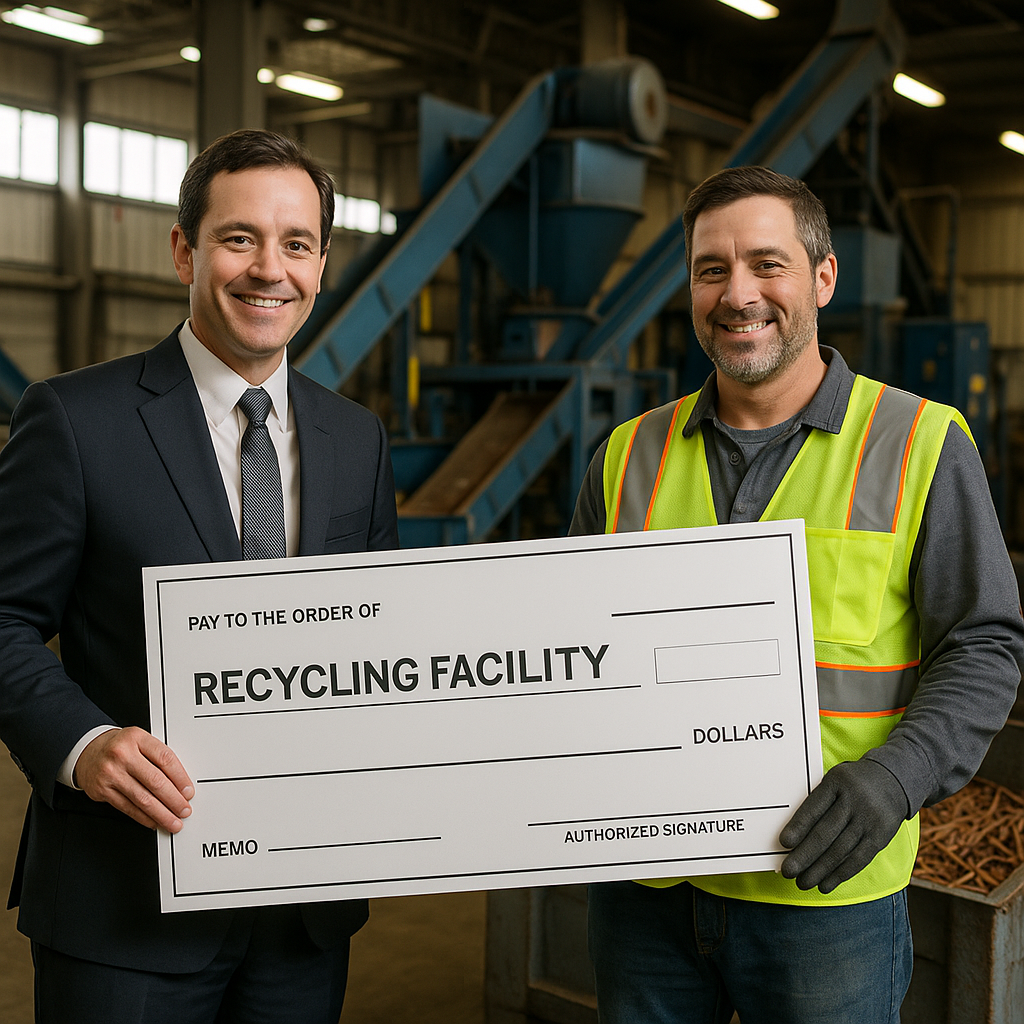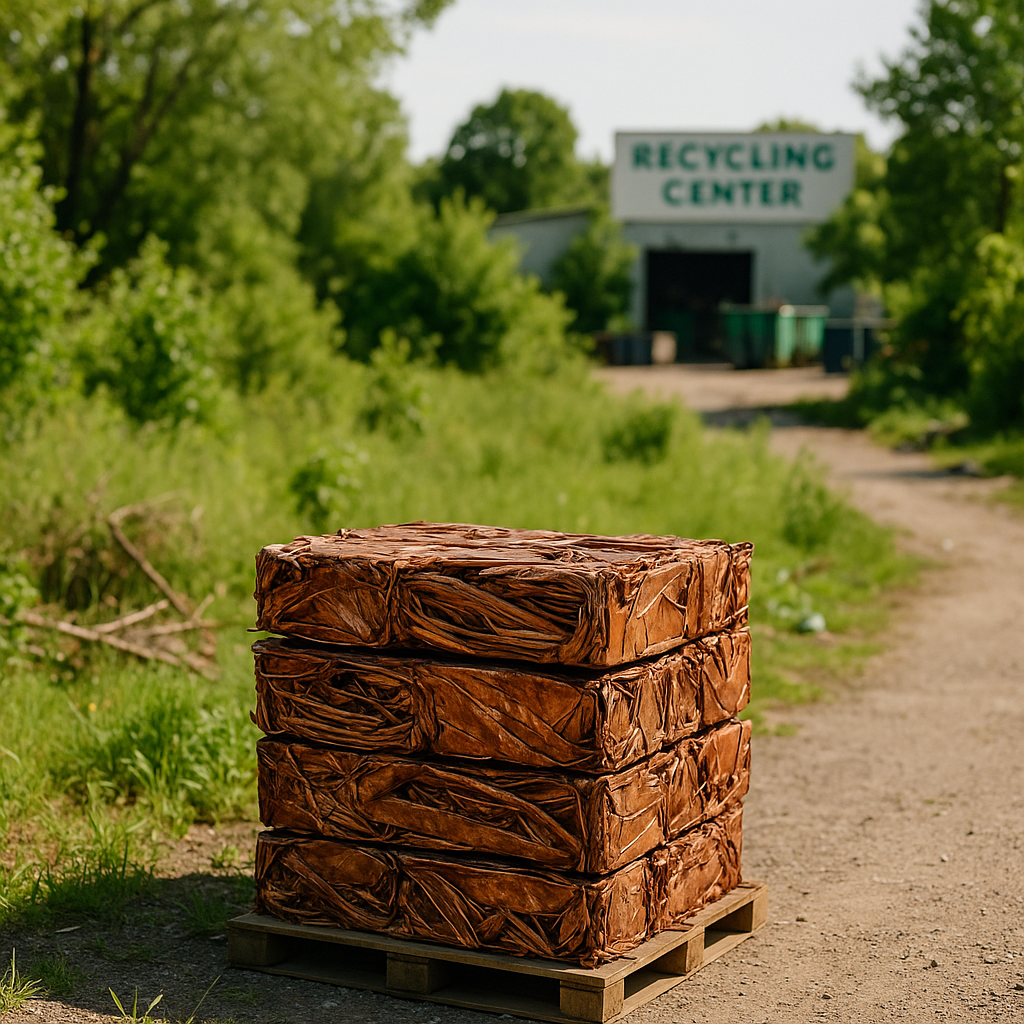5901 Botham Jean Blvd, Dallas, TX 75215
What Are Government Incentives for Copper Recycling?
June 5, 2025Governments worldwide are introducing financial incentives to enhance copper recycling efforts. These incentives include tax breaks, grants, and penalties for non-compliance. The aim is straightforward: make recycling profitable while discouraging wasteful practices.
Tax breaks provide businesses with direct financial benefits for implementing copper recycling programs. Companies can lower their tax liabilities by investing in recycling equipment or achieving specific recovery targets, leading to immediate economic advantages that enhance bottom-line performance.
Grants offer another effective financial tool for supporting copper recycling initiatives. Programs such as the Texas Emissions Reduction Plan provide funding to businesses that reduce environmental impact through recycling efforts. These grants help offset the initial costs of implementing recycling systems, making sustainable practices more accessible.
What types of tax incentives are offered for copper recycling?

Businesses engaged in copper recycling can access several tax incentives at both federal and state levels. The IRS offers the Qualified Reuse and Recycling Property Allowance, which provides a 50 percent depreciation allowance for recycling equipment and machinery purchased after August 2008. This applies to equipment dedicated to collecting, distributing, or recycling copper and other recyclable materials.
Many states have implemented their own tax incentive programs to encourage copper recycling. These incentives typically come in various forms to make recycling more economically attractive for businesses. Sales tax exemptions are common, allowing companies to purchase recycling equipment without paying state sales tax, reducing initial investment costs.
Income tax credits represent another significant benefit. States like Kentucky offer personal income tax credits of up to 50 percent on recycling equipment costs. Louisiana provides a 20 percent income tax credit on recycling equipment costs, targeting businesses that process postconsumer materials or create products containing recovered materials.
Property tax exemptions also play a critical role in making recycling operations more profitable. These exemptions often apply to machinery and equipment used exclusively for recycling or waste reduction purposes. Wisconsin offers a dedicated recycling property tax exemption for equipment used directly in waste reduction or recycling, while Nevada provides a 75 percent personal property tax exemption for ten years to qualifying recycling companies.
Some states have created additional specialized incentives. Texas has established the Tax Relief for Pollution Control Property Program, benefiting businesses that maintain equipment capable of reducing environmental impact. California offers partial exemptions of sales and use tax on manufacturing equipment used for generating or distributing electric power, which can benefit copper recycling operations that contribute to energy efficiency.
These tax incentives create substantial economic advantages beyond direct tax savings. By reducing operational costs, companies can improve profit margins while contributing to sustainability goals. The incentives effectively lower barriers to entry for businesses considering copper recycling initiatives and reinforce long-term commitment to sustainable practices.
How do government grants support copper recycling initiatives?

Government grants provide crucial financial support for copper recycling initiatives across the United States. These funding programs have gained importance since August 2023, when the U.S. Department of Energy (DOE) added copper to its list of critical materials. This designation makes copper producers eligible for government subsidies under the Inflation Reduction Act.
An example of this support is the DOE’s March 2024 announcement of up to $270 million in financial assistance for Wieland’s advanced copper recycling facility in Kentucky. This significant investment will expand U.S. recycling capacity through state-of-the-art copper scrap processing technology in Shelbyville. The project is part of the DOE’s Industrial Demonstrations Program.
Federal funding for copper recycling serves multiple purposes. It helps address supply chain challenges as domestic demand for copper outpaces current supply capabilities. The recycling industry faces significant hurdles, including developing advanced sorting technologies, ensuring a consistent supply of recyclable copper, and maintaining high-quality outputs for technological applications.
In addition to large-scale projects, the Environmental Protection Agency announced plans in 2023 for approximately $100 million in grants to boost recycling and waste management initiatives. This effort marks the EPA’s first major initiative in these areas in three decades, providing important supplemental support for the recycling sector.
These grants benefit both the industry and the environment by accelerating innovation in recovery techniques and improving recycling infrastructure. With copper demand expected to double by 2045 to over 50 million metric tons annually, government funding helps ensure that recycled copper can continue to supply roughly 30 percent of the world’s copper.
The critical material designation for copper has profound implications for recycling markets. Industry experts anticipate that with increased government backing, the percentage of copper sourced from recycling could grow by 5 to 10 percent over the next 25 years. This growth is essential as copper plays a crucial role in renewable energy development, electrification, and other green technologies.
What are the environmental benefits of government-incentivized copper recycling?

Government incentives for copper recycling offer substantial environmental benefits beyond economic gains. These programs address critical environmental challenges while supporting sustainable resource management.
The benefits are significant when comparing recycling to traditional copper mining and production. Recycling copper uses up to 85% less energy than extracting and processing new copper from ore, leading to lower greenhouse gas emissions and reduced fossil fuel dependence.
Copper’s unique properties make it especially valuable environmentally. Unlike many materials, copper can be recycled infinitely without losing its essential properties, allowing it to continuously cycle through the economy instead of becoming waste.
Reducing Mining Impact and Conserving Resources
Government incentives reduce the demand for new mining operations. Traditional mining causes environmental disruption, including deforestation, habitat destruction, and soil erosion. Mining also contaminates water sources with heavy metals and chemicals.
The tailings and waste from copper processing pose long-term environmental hazards, leaching harmful substances into the environment. By increasing recycling rates, governments help preserve natural landscapes and protect biodiversity.
For every ton of recycled copper, approximately 200 tons of mining waste are avoided, preserving land otherwise used for waste containment.
Water Conservation and Pollution Prevention
Copper mining and processing require vast water quantities, often in areas with water scarcity. Recycling incentives help conserve water by reducing new mining needs.
Copper production also creates water pollutants like acid mine drainage. Recycling typically has a smaller water footprint and produces fewer contaminants.
Environmental benefits extend beyond recycling. Transporting recycled copper requires less fuel than moving raw ore, reducing the overall environmental impact.
Supporting Circular Economy Goals
Government incentives align with circular economy principles, aiming to keep materials in use longer and minimize waste.
Copper’s recyclability makes it ideal for circular applications. Incentives like tax benefits and grants accelerate the transition to more circular material flows.
Programs such as Austin’s Universal Recycling Ordinance and the Texas Emissions Reduction Plan support sustainable practices and infrastructure for efficient material recovery.
Climate Change Mitigation
The climate benefits of incentivized copper recycling are significant. Primary production is energy-intensive with high carbon emissions, while recycling requires less energy and produces fewer gases.
Incentives like financial benefits and carbon taxes reduce the copper industry’s carbon footprint, supporting climate goals and sustainable practices.
As copper demand grows, especially for renewable technologies and electric vehicles, recycling will play a crucial role in meeting needs sustainably. Incentives ensure recycling capacity expands without increasing mining activity proportionally.
Conclusion: The impact of government incentives on copper recycling

Government incentives have become significant drivers in the copper recycling industry. Tax breaks, grants, and regulatory frameworks offer economic benefits to businesses adopting sustainable copper recycling practices. These financial advantages impact operational costs and promote environmental conservation. By encouraging the collection and processing of copper from end-of-life products, governments help decrease reliance on primary copper production.
These initiatives support a circular economy by closing resource loops and extending copper’s lifecycle. Programs such as local recycling ordinances and emissions reduction plans provide tangible benefits to businesses embracing sustainable methods. The economic growth from increased copper recycling extends beyond individual companies, creating jobs, stabilizing supply chains, and fostering technological innovation in waste management and material recovery.
For your recycling needs, contact Okon Recycling at 214-717-4083.
